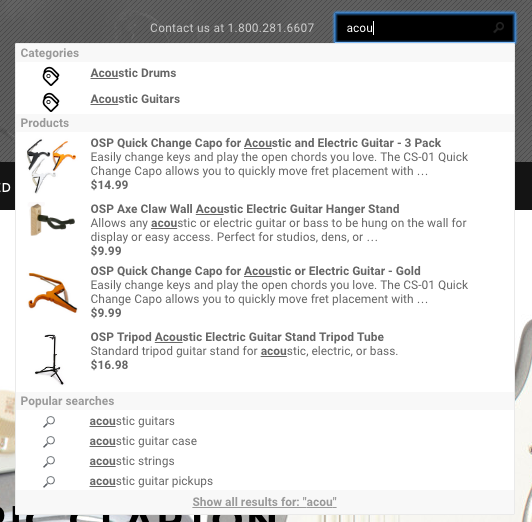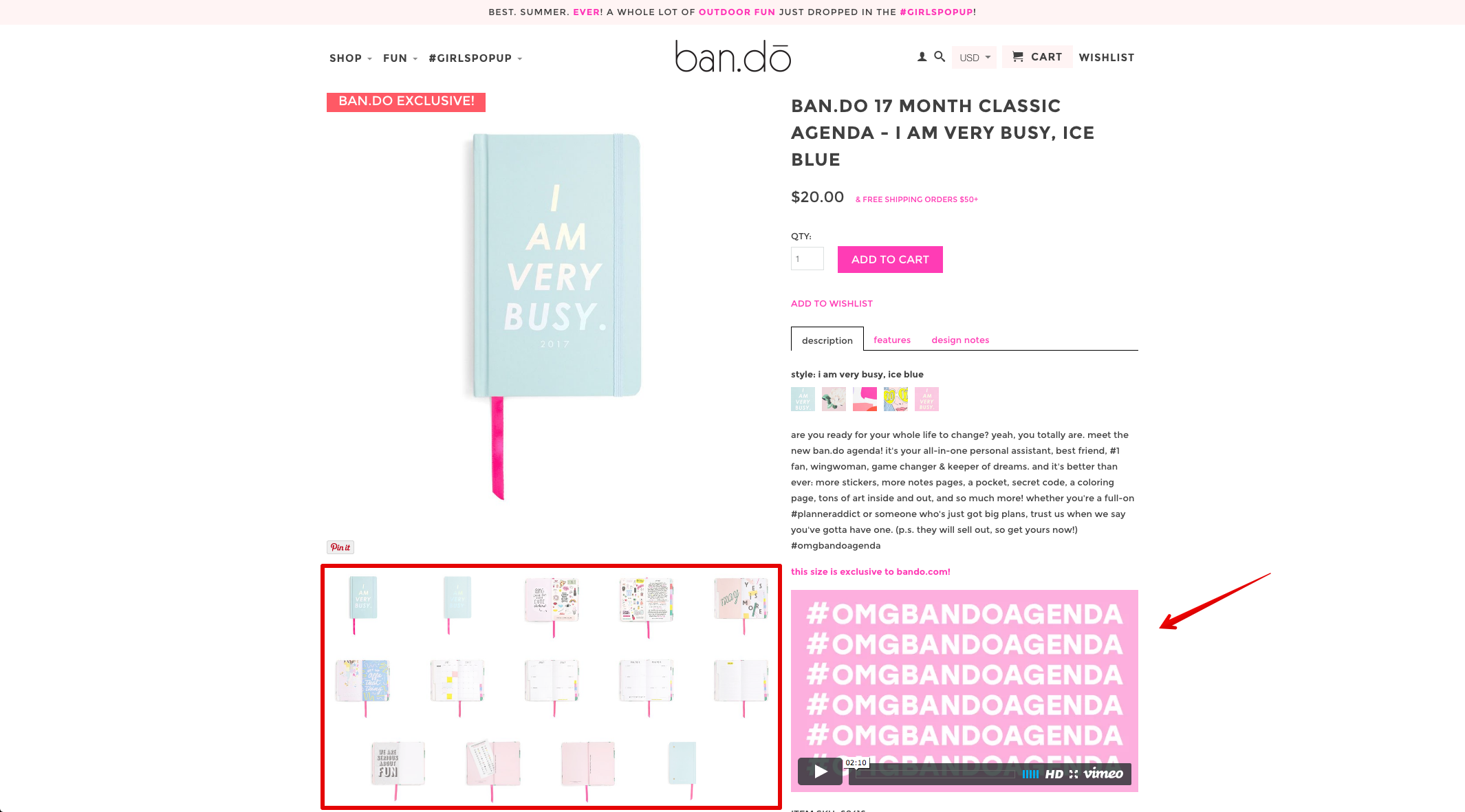20 Conversion Rate Optimization Ideas From High-Performing E-Commerce Stores
As an online store, you constantly need to be thinking about converting audiences and driving traffic. This is because e-commerce stores thrive on customers discovering their products and purchasing from them. Furthermore, converting website traffic into revenue-generating customers requires smart e-marketing tactics.
There are so many ways to make a customer’s purchasing journey smoother and easier. With analysis and proper understanding of their needs, you can make the path easier, shorter, and much more enjoyable for them. By fine-tuning your website’s speed, optimization, and overall UX, you can push people closer towards interacting with your products and services; this process is called Conversion Rate Optimization (CRO).
CRO is the process of increasing the percentage of transacting traffic to your website with the intention to purchase or “convert.”
Here are twenty tactics you can use to improve your e-commerce conversion rate online:
Simplify the User Experience
User Experience is one of the most important drivers of online purchases and conversions. E-commerce sites spend weeks and months trying to figure out how to please their customers and make the experience more enjoyable and simple for them. From the first point of contact between the customer and the brand to the actual purchasing of a product, the entire experience needs to be seamless.
Simplicity plays a key role in making the user experience easier, as it takes just one-fifth of a second for any customer to create their first impression about your brand. These crucial little microseconds have to be utilized fully and you need to quickly convey who your brand is to the customer. Avoid any form of excessive text or images and stay on-brand with your messaging with visually appealing design and branding that’s easy to grasp.
For instance, Province of Canada earns users’ attention by writing simple copy that is easy to understand and clear CTAs that push visitors to explore the site further.
Working with your most profitable products is one way to go if you’re not sure what to feature as your main hero advertisement. Up to 86% of audiences want to see ads of the company’s products featured on the homepage.
Include Coupon Codes
Coupon codes are the bread-and-butter of any e-commerce company looking to make it big. They drive sales by letting customers purchase products at a discounted price in order to build excitement and entice them to make more purchases or to return often. There are many apps that you can use in order to incentivize your purchases:
- Welcome bars - Welcome bars and quick announcement bars allow you to share coupon codes, share sales, and promotional tactics with customers when they arrive on the site. They appear as a bar on the homepage to grab the customer’s attention.
- Popups - Popups allow you to build an emailer list with ease. Eighty percent of consumers signed up for emails from a particular brand, ended up making purchases after interacting with them over a six month period.
Coupon codes are a great way to get more people interested in your brand. They stand out from the rest because of their ease of use and they can be implemented into the dashboard too, with no trouble.
Add testimonials to build trust
Are your products popular? Have they been featured in a publication? Do you have high-profile influencers recommending your products online? Use them to your advantage! You can feature testimonials, reviews, badges, etc. on your homepage to build credibility and trust. Eighty-eight percent of customers trust online reviews to be a genuine source of information - just as they would trust a recommendation from a family member or a friend.
In order to create better testimonials and opportunities, you have to get your products out there for more people to see. Once customers are on the homepage, help them find the products they’re looking for with a product discovery button. Customers will more easily navigate through your website if you are using smart category design, well-thought out functions on search, and engaging product discovery methods.
Use Intelligent Search
If customers are searching for products on the website, there’s a chance they already know where to find it. Topshop is a UK company that figured out that users were finding it hard to search for their products using the internal search box. Customers who did manage to use the search box converted 10X more than others. So, Topshop improved their search box design and ramped up its CRO exercise, leading to an increase of almost 6% in overall conversions.
Stores with a large number of products might want to feature a search bar on the homepage in an accessible location, allowing customers to directly search for what they want instead of having to search via categories.

Organize your categories effectively
Instead of trying to separate your products into many different categories, you should use four to six broad categories which then have specific subcategories as well. These category bars can be arranged right on the navigation bar based on popularity, and you should place the most popular categories upfront.
Take advantage of your 404 pages
The 404 page is just a simple page displaying a standard Http 404 error message. These error pages mustn’t lead to a dead end because then customers will be left hanging and you’ll lose them. Instead, guide them to other parts of the website by customizing your overall 404 pages to feature links to popular products, promotions, collections, and more.
Add a shoppable Instagram feed
When it comes to product discovery, Instagram is a very useful tool. Instagram embeds a shoppable feed onto the website and provides a great opportunity for you to inspire fans with photos that show off the products beautifully. Shoppable Instagram feeds are perfect to display User Generated Content which plays a massive role in determining the purchasing behaviors of millennials.
With Shoppable Instagram feeds, you can also influence the purchasing power of your audience. Up to 84% of millennials have claimed that UGC on websites play a role in influencing the stuff they purchase.

Use high-quality product images
Product images allow your customer to make a fair assessment of your products and services. You need to highlight them accordingly so they stand out from the rest of the clutter. Always opt for high-resolution, clear images from all angles. This will give the audience perspective and also raise your status as an online company that gets their advertising right.

Be upfront about price, delivery time, and out of stock products
When it comes to selling your products, honesty is one of the most important aspects your customers expect from you. Make sure you’re always upfront about the delivery time, price, and out of stock products in your company because customers won’t like being falsely advertised to.
If you’re including free shipping above a certain cost, it’s always better to advertise this fact. And make sure there are no hidden costs and charges that the customer might find out about later, as that may lose you a sale.
Showcase your product reviews
Your products need to stand out from the rest of the competition and this can only be done with the help of a product review. By showcasing your products to the right audiences and getting positive feedback, you’ll be able to progress in your quest for better product quality.
At the same time, highlighting these happy customers can go a long way in getting you more traffic. Customers depend on product reviews and by showcasing them, more people will want to purchase from your brand.
Add a curated Instagram Feed
A curated Instagram feed is another excellent way to get more people interested in your brand. By highlighting your beautiful products next to one another in an aesthetically pleasing manner, you’ll be able to put your brand in perspective. Customers will understand the kind of products you’re selling and also look forward to shopping directly off Instagram.
Prefill customer information at checkout
When a repeat customer heads to your store, you have to show them you remember them and look to make their overall experience even smoother. One way to do this is by prefilling the customer information at the checkout process. This means they can complete their purchase faster and not worry about filling their details, thus allowing you a higher e-commerce conversion rate.
Send abandoned cart emails
Abandoned carts are one of the biggest pain points for any e-commerce company. When a customer comes so close to checking out and abandons the cart, you need to find out why. You could send them email reminders to complete the purchase. You could also opt for giving them an extra discount or free shipping to further sweeten the deal and get them to come back and complete the purchase.
Optimize thank you emails
Thank you emails will allow your customers to understand exactly why they like shopping with you. You need to optimize them so they are sent at times when they shop often or even sign up for your newsletter. By doing so, you’re placing them back in the purchasing funnel and encouraging them to buy from your brand in the future.
Offer free shipping
Shipping costs can hold customers back from completing their purchase. Offering free shipping encourages them to complete an order, even if it is a long distance. Sites have been able to increase their conversions from changing extra shipping charges to free shipping by up to 50%.
Have a good refund policy
Refunds are a great way to remove the doubt and hesitancy customers have when shopping online. Ordering items such as clothing isn’t the same as in real life and sizes can vary. To help the customer, you should have a refund policy in place so they know they can always return it if it isn’t to their liking.
Use your “about us” page to tell a story
The “about us” page is more than just a summary of the store. It needs to tell a brand story so that customers understand your products and the mission of your brand. It’s important you build a lifestyle around the products your audience wants to be a part of. Build a story around what makes your brand special, what would an average customer look for, etc.
Create a contact page
If customers want to easily get in touch with you, it should be easy for them. Up to 44% of visitors end up leaving a website if there isn’t any contact information or a phone number available.
Not being able to relay any questions, complaints or other thoughts can be frustrating. The contact page should clearly state the ways in which your customers can reach out to you when something goes wrong and also explore opportunities with your brand. Make sure the contact page contains an email address, contact form, physical location, map with directions, retail store hours, specific contact options, and links to social media profiles.
Make sure the site is responsive
Mobile responsibility is another priority for businesses. Forty percent of people generally choose another result if the site isn’t optimized for mobiles. You can use the Google Mobile-Friendly Test tool to check if a site is responsive and make changes if it isn’t.
Optimize loading times
Your site needs to load properly and you can check this with the help of the Google Pagespeed Insights tool. It gives you a detailed and proper report on how fast a website loads, along with issues that can improve load times as well. You could also use tools such as SEOasaService, Pingdom, or WebPageTest.
When optimizing the store, the load times can differ and this can be a complicated process. There are a couple of things you need to keep in mind. The image sizes can have a significant impact on how the website loads. Make sure you compress them to the right size and optimize them to fit on the site. Tools are available to strip away any unwanted data in an image file to produce smaller files with no real visual difference.
Conclusion
These are some of the ways you can improve your e-commerce conversion rate online. Make sure you’re always on top of the many facets of your business and trying out new things. Once you find a formula that works for you, find new ways to enhance results to drive better sales and more traffic to your site.
 Salil Panikkaveettil
Salil Panikkaveettil